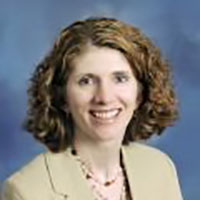
Dr. Sara Wilcox is a Professor in the Department of Exercise Science and the director of the Prevention Research Center in the Arnold School of Public Health at the University of South Carolina. Dr. Wilcox is a clinical psychologist with a specialization in adult development and aging. She completed her doctoral training at Washington University in St. Louis and a two year postdoctoral fellowship in cardiovascular disease epidemiology and prevention at Stanford University. She has been on the faculty at the University of South Carolina since 1999.
Dr. Wilcox’s primary area of expertise is in promoting physical activity, dietary change, and weight loss in adult underserved populations, particularly in African American adults and older adults. Her research involves working with community organizations to develop, implement, and evaluate behavioral, theory-based interventions that are delivered via community-based settings. She has both current and completed projects funded by the National Institutes of Health, Centers for Disease Control and Prevention, Department of Defense, and the Robert Wood Johnson Foundation. In most of these projects, she has overseen and supervised the development and implementation of the interventions. For the past 10 years, she has been working with faith communities to promote environmental, systems, and policy changes in churches.
Questions & Answers
The beauty of the Faith, Activity, and Nutrition (FAN) program is that it is a flexible program, designed to be adapted to local interests and needs. With that said, the program was based on a structural ecologic model, and I believe it is important that churches develop activities that fall in the following categories consistent with that model:
· Provide opportunities for physical activity and healthy eating
· Make opportunities appropriate and fun
· Set organizational guidelines and provide support
· Get the message out through church channels
But churches can meet these larger targets through multiple diverse strategies.
The program is not simply offering an exercise program in the church. It is about changing the church culture, environment, systems, and practices related to physical activity and healthy eating.
In our research study, we also included some core activities (e.g., distributing bulletin inserts, having a FAN champion share health messages before, during or after worship service) that we recommend retaining.
Our program was developed in partnership with the African Methodist Episcopal church in South Carolina and tested in churches in rural and urban areas. However, we believe the program could be adapted for most faith-based settings.
I can’t think of faith-based settings were the program could not be adapted.
Our experience has been that faith leader buy in is critical. A church leader (e.g., pastor) who believes the faith-based organization has a role to play in health promotion can make a difference in the success or failure of implementation. An encouraging and supportive church leader can go a long way in promoting the success of a program, whereas one who does not see health as part of church business or one who does not wish to make changes in the church around health can lead to a situation with poor implementation.
We’ve also seen that churches who integrated the program into their regular ministries and programs are more likely to be successful than churches who see this as an added responsibility.
Another facilitator to implementation is having a committee within the organization who is willing to take this on. Ideally the program should not be delegated to one or two people, but rather to a committee, who can plan and then implement.
Finally, we always encourage the church committees to plan activities that reach MOST of their members. An aerobics class at church is great, but it is going to attract a relatively small number of members. Building 10-minute activity breaks into all regular church meetings and bible studies, on the other hand, would reach many more members.
Keeping a log of activities, and how they map onto the four categories mentioned earlier from the structural ecologic model is a good way to monitor what is being done and whether it is consistent with the larger goals. Surveying members about what they like and don’t like or what activities they would like to see is also something to consider. We have a template available on our website that church committees can use to plan and monitor implementation. This template is organized according to the theoretical model so it helps to guide strategies and activities likely to be most useful and consistent with the program. But again, the program is flexible and allows for substantial adaptation in implementation.
Our Prevention Research Center was funded for another 5 years. The focus of our applied public health prevention research project was to study the dissemination and implementation of the Faith, Activity, and Nutrition program.


